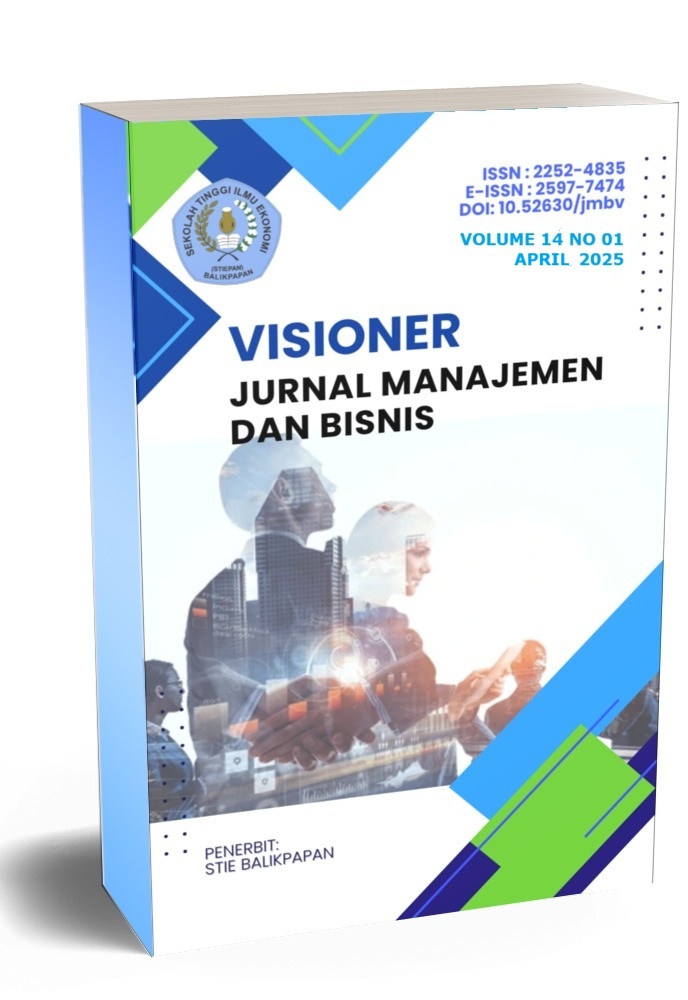Analysis of the Relationship between Products in Consumer Shopping Patterns with the Apriori Algorithm
DOI:
https://doi.org/10.52630/jmbv.v14.i01.105Keywords:
Data Mining , Apriori ALgorithm , Consumer Spending PatternsAbstract
The fitri hijab shop is one of the shops that sells hijab, in this shop there are many transactions that can be utilized and can be managed to produce information. Analysis of transactions in this shop can help shop owners to create a business strategy, such as knowing items that are often purchased together. Data mining is a field of several scientific fields that combines techniques from machine learning, pattern recognition, statistics, databases and visualization to identify problems of retrieving information from large databases. One of the algorithms from data mining techniques that can be used to find consumer shopping patterns is the apriori algorithm. The apriori algorithm is one of the algorithms in data mining that is used to retrieve data with associative rules in determining the relationship of a combination of items. From the data analysis using the python programming language, 2 association rules were obtained, namely: If you buy an instant hijab, you will buy a square hijab with a confidence value of 0.53 and if you buy a square hijab, you will buy an instant hijab with a confidence value of 0.57.
References
Abidin, Z., Amartya, A. K., & Nurdin, A. (2022). Penerapan algoritma Apriori pada penjualan suku cadang kendaraan roda dua (Studi kasus: Toko Prima Motor Sidomulyo). Jurnal Teknoinfo, 16(2), 225–232. https://doi.org/10.33365/jti.v16i2.1459 DOI: https://doi.org/10.33365/jti.v16i2.1459
Fadila, S. A., Setiawansyah, & Darwis, D. (2021). Analisa data penjualan handphone dan elektronik menggunakan algoritma Apriori (Studi kasus: CV Rey Gasendra). Telefortech, 2(1), 1–6. https://doi.org/10.33365/tft.v2i1.1810 DOI: https://doi.org/10.31294/larik.v1i2.674
Prasetyo, A., Musyaffa, N., & Sastra, R. (2020). Implementasi data mining untuk analisa data penjualan dengan menggunakan algoritma Apriori (Studi kasus Dapoerin’s). Jurnal Khatulistiwa, 8(2), 94–101. https://doi.org/10.31294/jki.v8i2.8994 DOI: https://doi.org/10.31294/jki.v8i2.8994
Prasetya, T., Yanti, J. E., Purnamasari, A. I., Dikananda, A. R., & Anwar, S. (2021). Analisis data transaksi terhadap pola pembelian konsumen menggunakan metode algoritma Apriori. Informatics for Education and Professionals, 6(1), 43–52. https://doi.org/10.51211/itbi.v6i1.1688 DOI: https://doi.org/10.51211/itbi.v6i1.1688
Putra, C. P., Rifai, A., Widianto, K., & Irmawati. (2022). Penerapan metode association rule terhadap pola data penyakit pada RSUD Jakarta menggunakan algoritma Apriori. Jurnal Infortech, 4(1), 58–63. https://doi.org/10.31294/infortech.v4i1.12849
Ramadhan, W. S., & Sari, R. (2024). Implementasi algoritma Apriori dalam menentukan pola transaksi penjualan. Jurnal Infortech, 6(1), 52–58. https://doi.org/10.31294/infortech.v6i1.21964 DOI: https://doi.org/10.31294/infortech.v6i1.21964
Downloads
Published
Issue
Section
License
Copyright (c) 2025 Afriosa Syawitri, Siti Rahmi Hidayatullah, Rusy Dina (Author)

This work is licensed under a Creative Commons Attribution 4.0 International License.
License Terms
 VISONER : Jurnal Manajemen dan Bisnis (VJMB) by STIE Balikpapan is licensed under a Creative Commons Attribution 4.0 International License.
VISONER : Jurnal Manajemen dan Bisnis (VJMB) by STIE Balikpapan is licensed under a Creative Commons Attribution 4.0 International License.
You are free to:
- Share ” copy and redistribute the material in any medium or format
- Adapt ” remix, transform, and build upon the material for any purpose, even commercially.
Under the following terms:
-
Attribution ” You must give appropriate credit, provide a link to the license, and indicate if changes were made. You may do so in any reasonable manner, but not in any way that suggests the licensor endorses you or your use.
- No additional restrictions ” You may not apply legal terms or technological measures that legally restrict others from doing anything the license permits.












